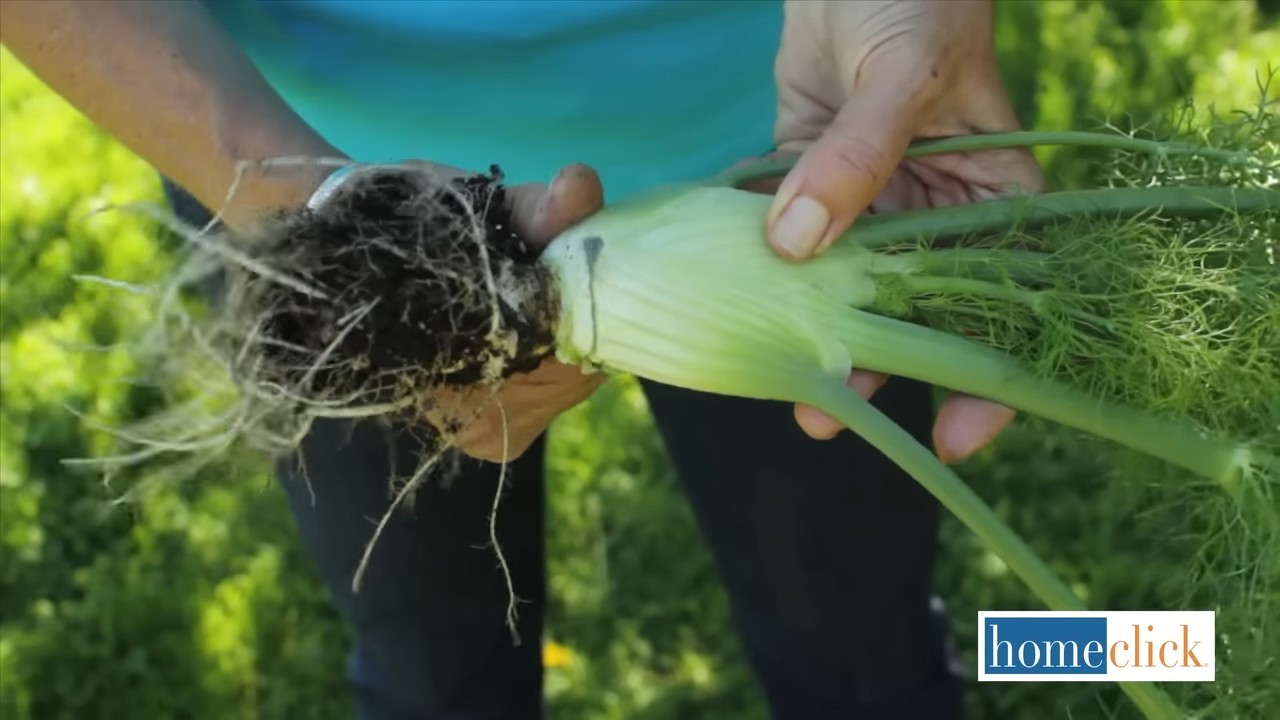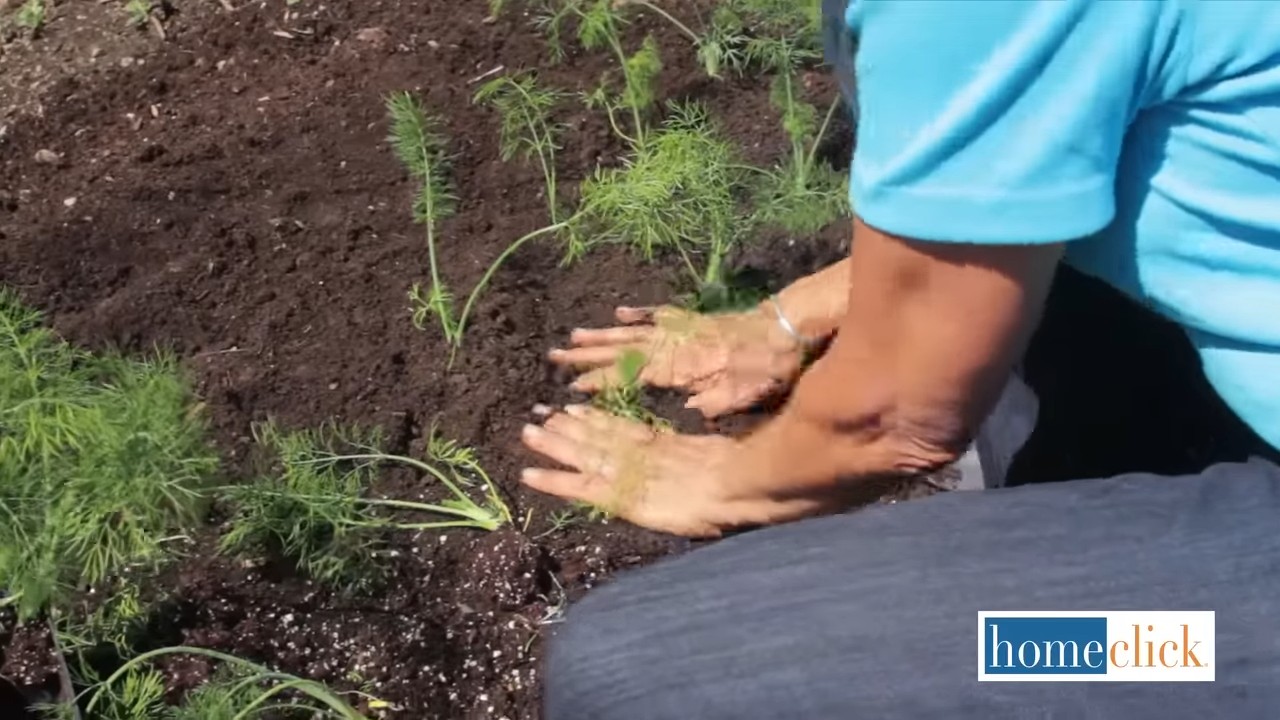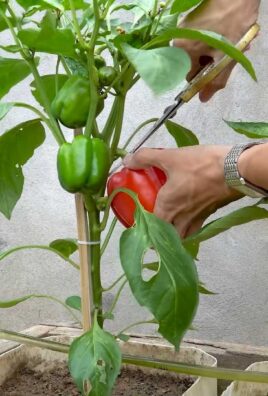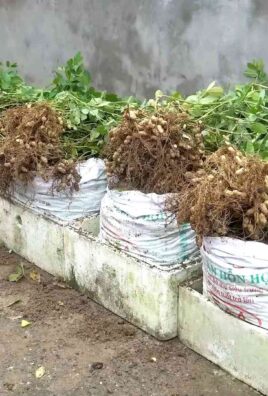Growing Fennel at Home can seem daunting, but trust me, it’s easier than you think! Imagine stepping outside your back door and snipping fresh, fragrant fennel fronds to add a burst of anise-like flavor to your salads, soups, or even grilled fish. Sounds amazing, right? Well, it can be your reality!
Fennel has a rich history, dating back to ancient Roman times when it was believed to bestow longevity, courage, and even ward off evil spirits. While I can’t promise you’ll become immortal, I can guarantee that growing your own fennel will bring a touch of that ancient magic to your garden and your kitchen.
In today’s busy world, we’re all looking for ways to connect with nature and enjoy fresh, healthy ingredients. Store-bought fennel can be expensive and often lacks the vibrant flavor of homegrown. That’s where this DIY guide comes in! I’m going to share my favorite tips and tricks for successfully growing fennel at home, even if you have limited space or gardening experience. From seed starting to harvesting, I’ll walk you through every step, ensuring you have a bountiful supply of this versatile herb and vegetable. Get ready to unleash your inner gardener and enjoy the delicious rewards!

Growing Fennel at Home: A Beginner’s Guide
Hey there, fellow gardening enthusiasts! I’m so excited to share my experience with growing fennel at home. It’s surprisingly easy and rewarding, plus you get both the delicious bulb and the flavorful fronds to use in your cooking. Let’s dive in!
Choosing Your Fennel Variety
Before we get our hands dirty, let’s talk about fennel varieties. There are two main types: bulb fennel (also called Florence fennel) and herb fennel.
* **Bulb Fennel:** This is what you’re likely thinking of when you picture fennel. It forms a swollen, bulb-like base above the ground. Popular varieties include ‘Florence’, ‘Zefa Fino’, and ‘Rondo’. I personally love ‘Florence’ because it’s reliable and produces a good-sized bulb.
* **Herb Fennel:** This type is grown primarily for its feathery leaves and seeds. It doesn’t form a bulb. ‘Bronze Fennel’ is a beautiful variety with dark, bronze-colored foliage that adds a touch of drama to your garden.
For this guide, we’ll focus on growing bulb fennel, but the general principles apply to herb fennel as well.
Getting Started: Seeds vs. Transplants
You have two options for starting your fennel: seeds or transplants.
* **Seeds:** Starting from seed is the most economical option. You’ll have more variety to choose from, and it’s incredibly satisfying to watch your plants grow from tiny seeds.
* **Transplants:** Buying transplants from a nursery gives you a head start. This is a good option if you’re short on time or if your growing season is short.
I usually start my fennel from seed indoors, about 4-6 weeks before the last expected frost. This gives me a nice head start and allows me to control the growing environment.
Sowing Seeds Indoors (Optional)
If you’re starting from seed indoors, here’s what you’ll need:
* Seed starting trays or small pots
* Seed starting mix (a light, well-draining mix is essential)
* Spray bottle or watering can
* Grow lights (optional, but highly recommended)
* Heat mat (optional, but can speed up germination)
Here’s how to sow your fennel seeds indoors:
1. **Prepare your containers:** Fill your seed starting trays or pots with seed starting mix. Gently tap the containers to settle the mix.
2. **Sow the seeds:** Sow 2-3 seeds per cell or pot, about ¼ inch deep.
3. **Water gently:** Use a spray bottle or watering can to moisten the soil. Be careful not to overwater.
4. **Provide warmth and light:** Place the trays or pots on a heat mat (if using) and under grow lights (if using). If you don’t have grow lights, place them in a sunny window.
5. **Keep the soil moist:** Check the soil daily and water as needed to keep it moist but not soggy.
6. **Thin seedlings:** Once the seedlings emerge (usually in 7-14 days), thin them to one plant per cell or pot. Choose the strongest seedling and snip off the others at the soil line.
Preparing Your Garden Bed
Fennel needs a sunny spot with well-drained soil. Here’s how to prepare your garden bed:
1. **Choose a sunny location:** Fennel needs at least 6 hours of sunlight per day.
2. **Amend the soil:** Dig in plenty of compost or well-rotted manure to improve drainage and fertility. Fennel prefers a slightly acidic to neutral soil pH (around 6.0-7.0). You can test your soil pH with a soil testing kit.
3. **Remove weeds:** Clear the area of any weeds and grass.
4. **Loosen the soil:** Use a garden fork or tiller to loosen the soil to a depth of at least 12 inches.
5. **Level the surface:** Rake the surface smooth.
Transplanting Seedlings or Planting Seeds Directly
Once your seedlings are ready to be transplanted (they should have at least 2-3 sets of true leaves) or the danger of frost has passed, it’s time to plant them in the garden.
1. **Harden off seedlings (if applicable):** If you started your seedlings indoors, you’ll need to harden them off before transplanting them. This means gradually exposing them to outdoor conditions over a period of 7-10 days. Start by placing them in a sheltered spot outdoors for a few hours each day, gradually increasing the amount of time they spend outside.
2. **Dig holes:** Dig holes that are slightly larger than the root balls of your seedlings or the depth you would plant your seeds. Space the holes about 12-18 inches apart.
3. **Plant the seedlings or seeds:** Gently remove the seedlings from their containers and place them in the holes. If planting seeds directly, sow them about ¼ inch deep.
4. **Backfill the holes:** Fill the holes with soil and gently firm the soil around the plants.
5. **Water thoroughly:** Water the plants thoroughly after planting.
Caring for Your Fennel Plants
Fennel is relatively easy to care for, but here are a few tips to keep your plants happy and healthy:
* **Watering:** Water regularly, especially during dry periods. Fennel needs consistent moisture to produce a good bulb. Aim for about 1 inch of water per week.
* **Fertilizing:** Fertilize every few weeks with a balanced fertilizer. I like to use a liquid seaweed fertilizer.
* **Weeding:** Keep the area around your fennel plants free of weeds. Weeds compete with fennel for nutrients and water.
* **Mulching:** Apply a layer of mulch around your plants to help retain moisture, suppress weeds, and regulate soil temperature.
* **Earthing up:** As the bulb begins to swell, you can “earth up” the soil around it. This means mounding soil around the base of the bulb to blanch it and make it more tender.
* **Pest and disease control:** Fennel is generally pest-resistant, but it can be susceptible to aphids and slugs. Check your plants regularly for pests and take action if necessary. You can use insecticidal soap for aphids and slug bait for slugs.
Harvesting Your Fennel
The time to harvest your fennel depends on the variety and growing conditions. Generally, you can harvest the bulb when it reaches about the size of a tennis ball.
1. **Loosen the soil:** Use a garden fork to loosen the soil around the bulb.
2. **Pull the plant:** Gently pull the plant from the ground.
3. **Trim the roots and stalks:** Trim the roots and stalks, leaving about 2-3 inches of stalk attached to the bulb.
4. **Store the bulb:** Store the bulb in the refrigerator for up to a week.
You can also harvest the fronds (leaves) of the fennel plant at any time. Simply snip off the fronds as needed. The fronds have a delicate anise flavor and can be used in salads, soups, and other dishes.
Using Your Homegrown Fennel
Now for the best part: using your homegrown fennel! Here are a few ideas:
* **Raw:** Slice the bulb thinly and add it to salads.
* **Roasted:** Roast the bulb with other vegetables.
* **Grilled:** Grill the bulb for a smoky flavor.
* **Braised:** Braise the bulb in broth or wine.
* **Soups and stews:** Add the bulb or fronds to soups and stews.
* **Salads:** Use the fronds as a garnish or add them to salads.
* **Fish dishes:** Fennel pairs well with fish.
* **Fennel tea:** Steep the seeds in hot water to make a soothing tea.
Troubleshooting
Even with the best care, you might encounter some problems when growing fennel. Here are a few common issues and how to address them:
* **Bolting:** Bolting is when the plant prematurely flowers. This can happen if the plant is stressed by heat, drought, or poor soil. To prevent bolting, choose a bolt-resistant variety, water regularly, and provide shade during the hottest part of the day.
* **Slugs and snails:** Slugs and snails can damage the leaves and bulbs of fennel plants. Use slug bait or handpick them off the plants.
* **Aphids:** Aphids can suck the sap from fennel plants, causing them to weaken. Use insecticidal soap to control aphids.
* **Yellowing leaves:** Yellowing leaves can be a sign of nutrient deficiency or overwatering. Make sure your soil is well-drained and fertilize regularly.
Saving Fennel Seeds
If you want to save fennel seeds for next year, allow some of your plants to flower and go to seed. Once the seed heads are dry and brown, cut them off and store them in a paper bag in a cool, dry place.
Growing fennel at home is a rewarding experience that allows you

Conclusion
So, there you have it! Growing fennel at home is not only achievable, but it’s also incredibly rewarding. From the delicate anise-like aroma that fills your garden to the crisp, refreshing flavor it adds to your culinary creations, fresh fennel elevates everything it touches. We’ve walked you through the essential steps, from selecting the right variety and preparing your soil to nurturing your plants and harvesting your bounty.
But why is this DIY trick a must-try? Simply put, the difference between store-bought fennel and homegrown fennel is night and day. The freshness, the intensity of flavor, and the satisfaction of knowing you cultivated it yourself are unparalleled. Plus, you have complete control over the growing process, ensuring your fennel is free from harmful pesticides and herbicides.
Beyond the basic method we’ve outlined, there’s plenty of room for experimentation. Consider companion planting your fennel with dill or chamomile to attract beneficial insects and further enhance its growth. You could also try growing fennel in containers if you have limited garden space. For a unique twist, explore different fennel varieties like ‘Bronze Fennel’ for its striking foliage or ‘Finocchio’ for its bulbous base.
Don’t be afraid to get your hands dirty and embrace the journey of growing fennel at home. It’s a surprisingly easy and fulfilling experience that will transform your cooking and connect you with nature in a meaningful way. We’re confident that once you taste the difference, you’ll never go back to store-bought fennel again.
We encourage you to give this DIY project a try and share your experiences with us! Let us know in the comments below what variety you chose, what challenges you faced, and what delicious dishes you created with your homegrown fennel. We’re eager to hear your stories and learn from your successes (and even your failures!). Happy gardening!
Frequently Asked Questions (FAQs)
What is the best time of year to plant fennel?
The ideal time to plant fennel depends on your climate. In warmer regions with mild winters, you can plant fennel in the fall for a spring harvest. In colder climates, it’s best to start seeds indoors 6-8 weeks before the last expected frost and transplant them outdoors after the danger of frost has passed. Alternatively, you can direct sow seeds outdoors after the last frost, but be prepared for a slightly later harvest.
How much sunlight does fennel need?
Fennel thrives in full sun, requiring at least 6-8 hours of direct sunlight per day. Insufficient sunlight can lead to leggy growth and reduced bulb development (for bulb fennel varieties). Choose a sunny location in your garden or ensure your container-grown fennel receives ample sunlight.
What kind of soil is best for growing fennel?
Fennel prefers well-drained, fertile soil with a slightly acidic to neutral pH (around 6.0 to 7.0). Amend your soil with compost or other organic matter to improve drainage and fertility. Avoid heavy clay soils, as they can become waterlogged and hinder root development.
How often should I water fennel?
Fennel needs consistent moisture, especially during hot and dry periods. Water deeply whenever the top inch of soil feels dry to the touch. Avoid overwatering, as this can lead to root rot. Mulching around the base of the plants can help retain moisture and suppress weeds.
Does fennel need fertilizer?
While fennel isn’t a heavy feeder, it benefits from occasional fertilization. Apply a balanced fertilizer (e.g., 10-10-10) according to the package instructions a few weeks after transplanting or when the plants are about 6 inches tall. You can also side-dress with compost or aged manure throughout the growing season.
How do I harvest fennel?
The harvesting time depends on whether you’re growing bulb fennel or herb fennel. For bulb fennel, harvest when the bulb reaches a desired size, typically around 2-3 inches in diameter. Cut the bulb at the base of the plant, leaving the roots intact. For herb fennel, you can harvest the leaves and seeds as needed throughout the growing season. Simply snip off the leaves with scissors or shears. To harvest seeds, allow the flower heads to dry completely on the plant, then cut them off and shake them into a bag or container.
Is fennel a perennial or an annual?
Fennel is technically a short-lived perennial in warmer climates (zones 7-10), meaning it can live for more than two years. However, it’s often grown as an annual in colder climates because it may not survive harsh winters. Even in warmer climates, fennel plants tend to become less productive after a few years, so it’s often best to replant them annually.
Why is my fennel bolting (going to seed)?
Bolting, or premature flowering, can occur when fennel is stressed by heat, drought, or poor soil conditions. To prevent bolting, provide consistent moisture, protect plants from extreme heat, and ensure the soil is fertile. If your fennel does bolt, you can still harvest the leaves and seeds, although the bulb may become tough and less flavorful.
Can I grow fennel in containers?
Yes, fennel can be successfully grown in containers. Choose a large container (at least 12 inches in diameter) with drainage holes. Use a well-draining potting mix and provide regular watering and fertilization. Container-grown fennel may require more frequent watering than plants grown in the ground.
Is fennel invasive?
In some regions, fennel can be considered invasive, as it can self-seed readily and spread aggressively. To prevent fennel from becoming invasive, remove flower heads before they go to seed. You can also grow fennel in containers to limit its spread. Be sure to check with your local agricultural extension office to determine if fennel is considered invasive in your area.
What are some common pests and diseases that affect fennel?
Fennel is generally resistant to pests and diseases, but it can occasionally be affected by aphids, spider mites, or powdery mildew. Inspect your plants regularly and take action promptly if you notice any signs of infestation or disease. You can treat aphids and spider mites with insecticidal soap or neem oil. Powdery mildew can be controlled with fungicides or by improving air circulation around the plants.
Can I eat all parts of the fennel plant?
Yes, all parts of the fennel plant are edible, including the bulb, stalks, leaves, flowers, and seeds. The bulb is often eaten raw in salads or cooked in soups, stews, and gratins. The stalks can be used like celery in soups and salads. The leaves can be used as a herb to flavor a variety of dishes. The flowers can be used as a garnish or to make fennel pollen. The seeds can be used as a spice in breads, sausages, and other dishes.
How do I store fennel?
Store fennel bulbs in the refrigerator for up to a week. Wrap them loosely in plastic wrap or store them in a plastic bag. Fennel leaves can be stored in the refrigerator for a few days, wrapped in a damp paper towel. Fennel seeds should be stored in an airtight container in a cool, dark place.





Leave a Comment